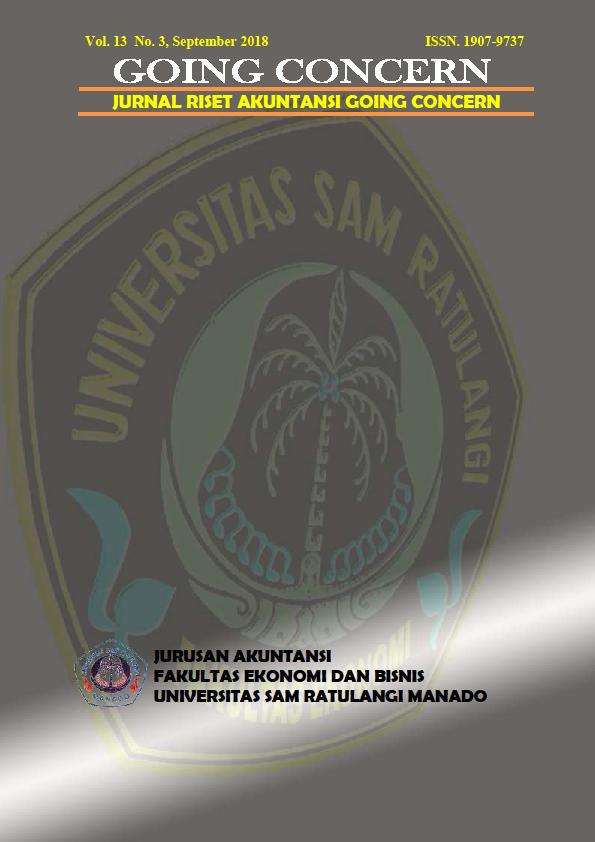ANALISIS PENGELOLAAN PIUTANG DAN KERUGIAN PIUTANG TAK TERTAGIH PADA PT. BANK RAKYAT INDONESIA CABANG
Abstract
The provision of credit facilities by PT. Bank Rakyat Indonesia branch Bitung will generate accounts receivable. The more the provision of services on credit, the greater the risk for uncollectible. The purpose of this study is to analyze the management of receivables and losses on bad debts at PT. Bank Rakyat Indonesia Branch Bitung. This research using descriptive method analyze that is analyzing data by determining, collecting, clarifying, and interpreting resulting in a clear picture of the control of accounts receivable against the risk of bad debts. To obtain the necessary data, the researcher use observation and interview techniques method. The type of data is primary data and secondary data. The classification of receivables applied to PT, Bank Rakyat Indonesia Branch Bitung is in accordance with Financial Accounting Standard (FAS) No. 9. The policy of PT. Bank Rakyat Indonesia Branch Bitung in controlling the receivables is by estimate the accounts receivable at 3%. If the bad debts are <3%, then the control of the accounts receivable is good. But if the bad debts are> 3%, then the control of the account receivables is not good. From the controlling method of the account receivables, it can be see that the amount of bad debts at PT. Bank Rakyat Indonesia Branch Bitung is still <3%, so it can be concluded that the control of account receivables at PT. Bank Rakyat Indonesia Branch Bitung has been running well.
Keywords: Account Receivable and Bad Debt






.png)










